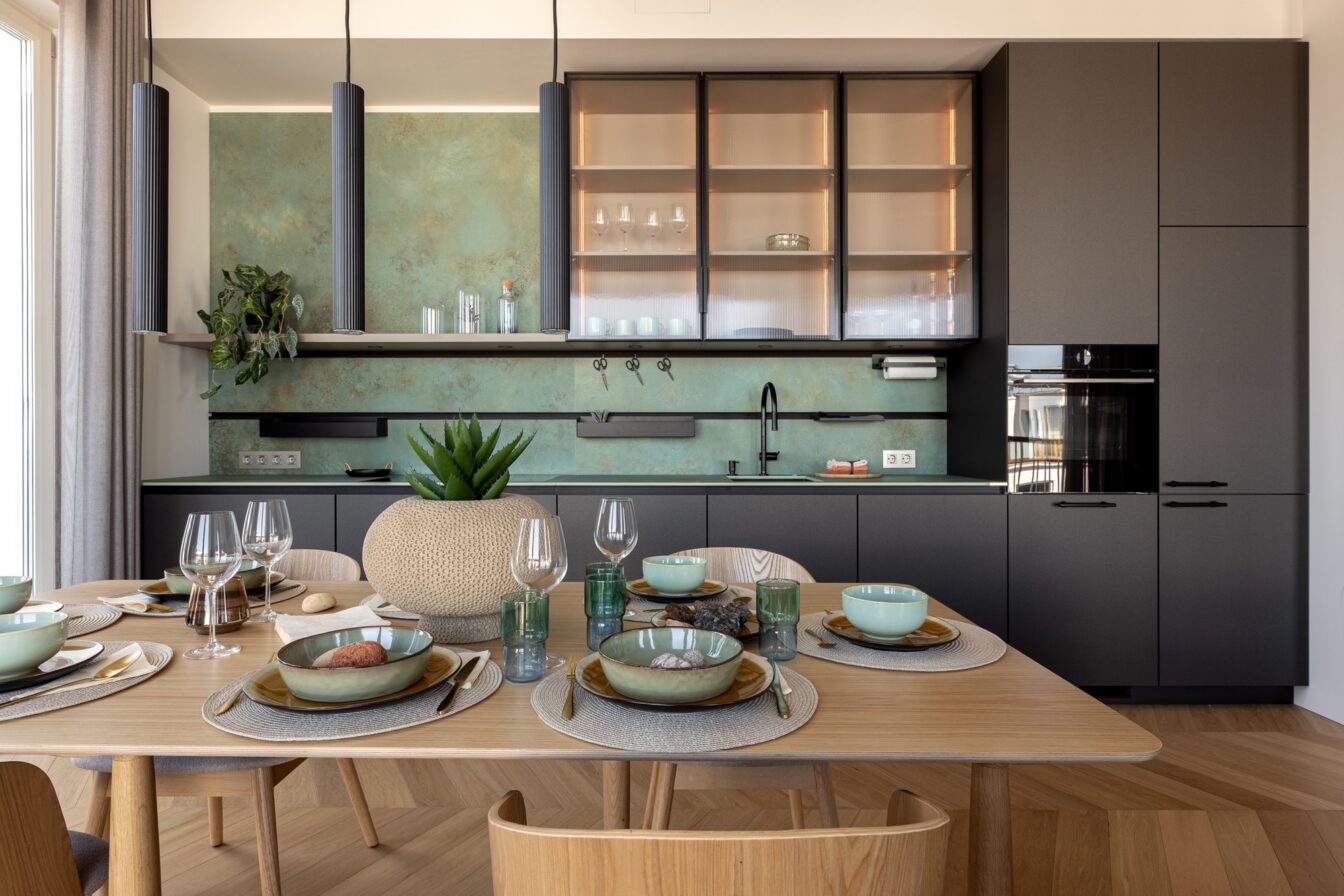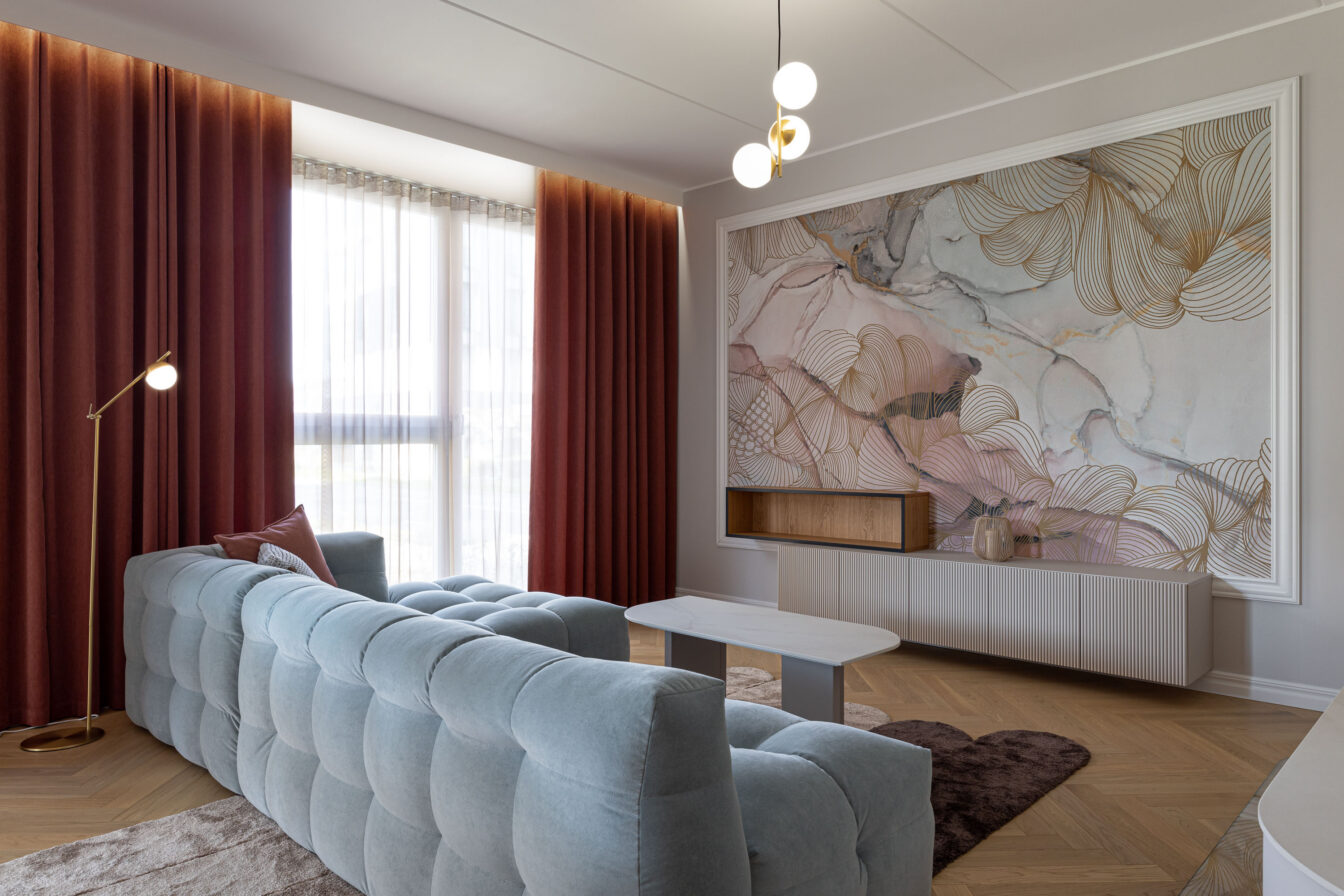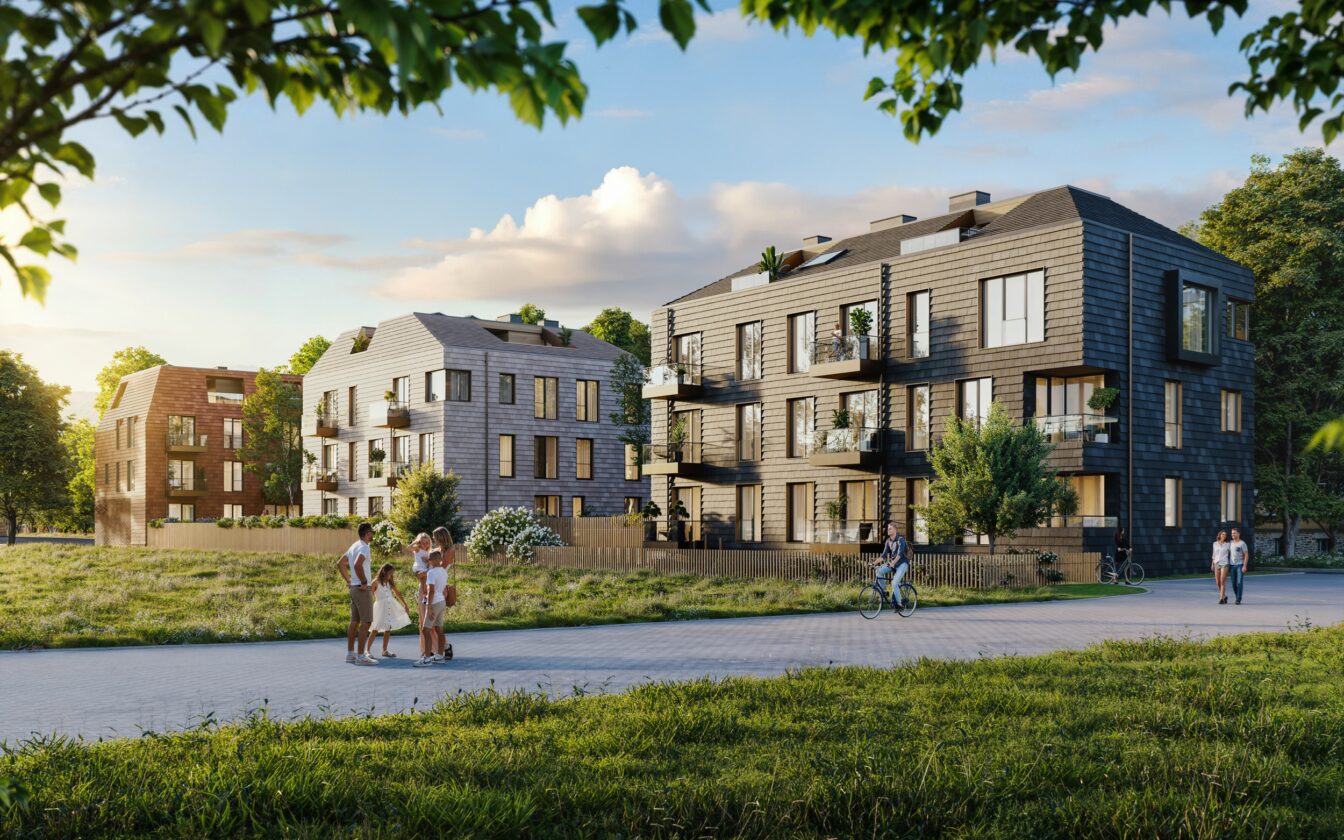How to Solve Kitchen Lighting?
The kitchen is the heart of the home – a space where work and relaxation, everyday life and guests, light and shadows meet. This places many demands on the kitchen, some of which contradict each other. The kitchen should be both practical and cosy, a place where everything can be comfortably done and where you can enjoy the results afterwards.
In Merko apartment floor plans, the dining table is strategically positioned in the most practical location; however, this doesn’t mean homeowners can’t occasionally change the layout to suit their preference. Once construction work is completed and the cable is neatly tucked away in the ceiling, relocating the light fixture to a new location requires a few clever tricks.
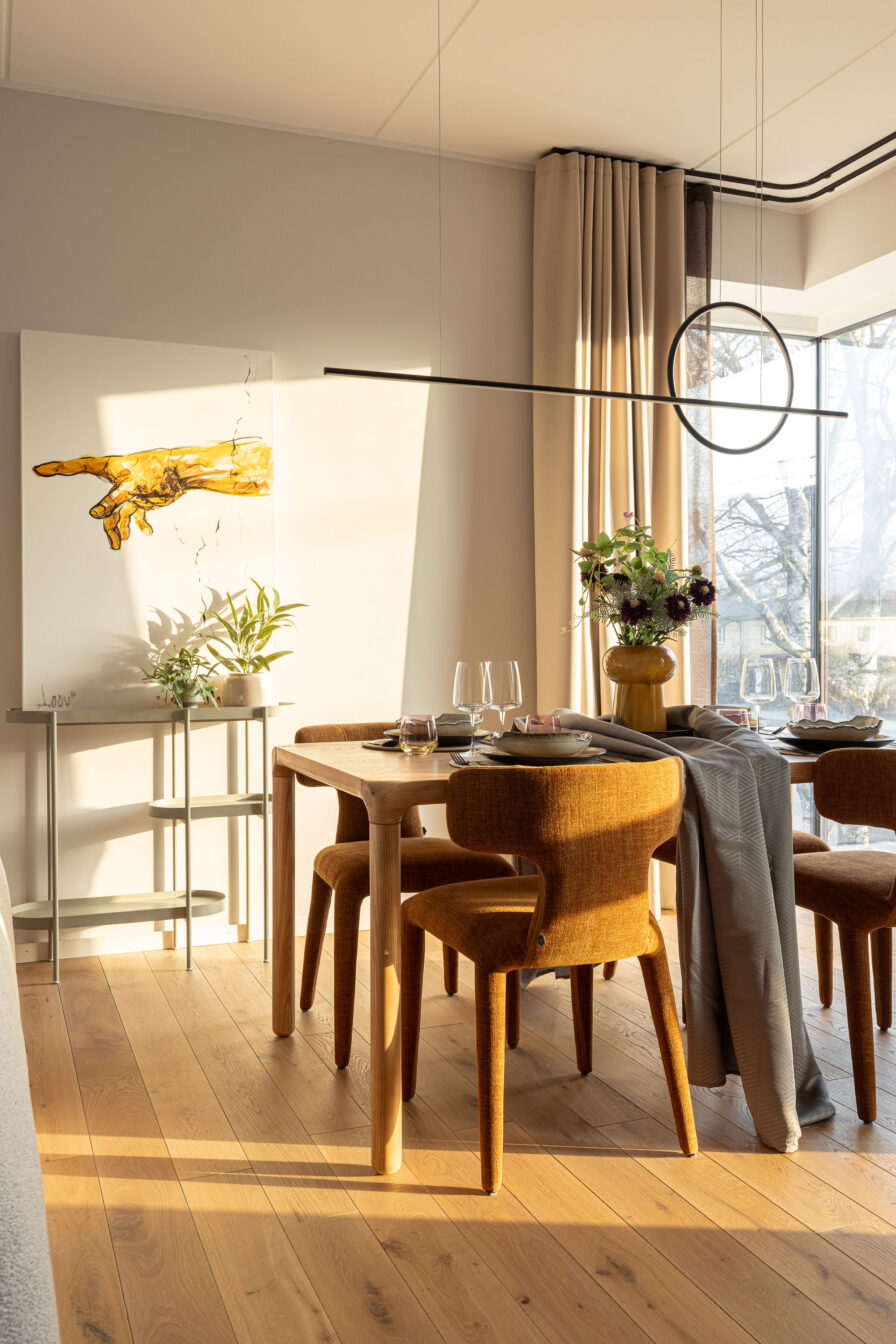
In loft and/or Scandinavian style interiors, the exposed cord creates a captivating effect as it gracefully hangs in a flexible curve, descending to the desired location with a specially designed cord attachment. In a more minimalist space, track lighting can elegantly and efficiently illuminate the entire kitchen and living area. To maintain the ability to switch kitchen, dining, and living room zones separately, it’s essential to select a three-phase track that aligns perfectly with the hanging cables.
The advantage of tracks is that you can add lights over time and direct some of them toward upper cabinets, paintings, etc. You can also position pendant lights strategically above the table.
Since designing unique solutions can prove complex, there’s always the option to describe your situation at a lighting showroom and ask for their recommendations. For a round table, it’s worth asking for fixtures with the largest possible ceiling rose, while for an elongated table, consider linear models where the cable rose is separate from the fixture’s suspension points.
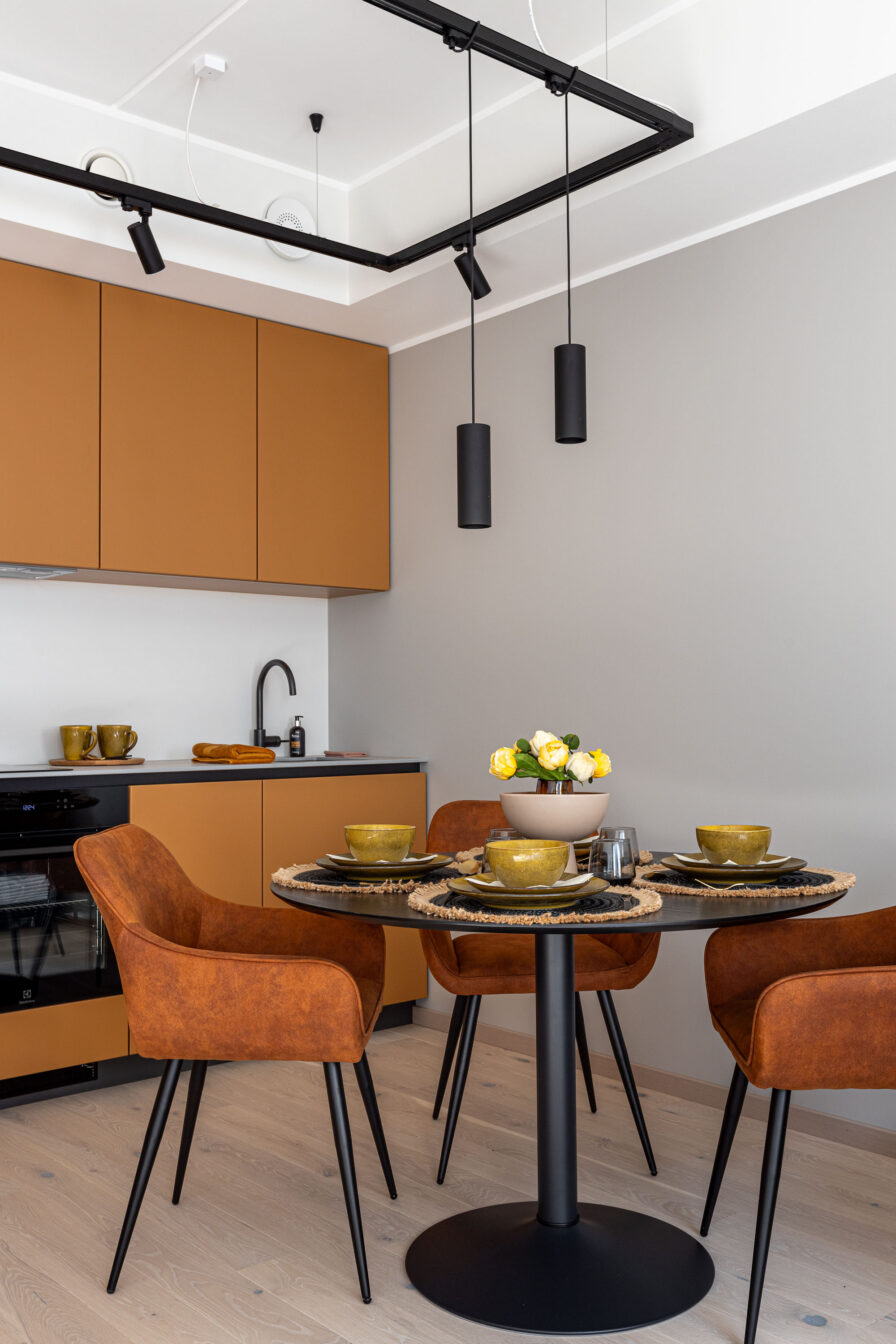
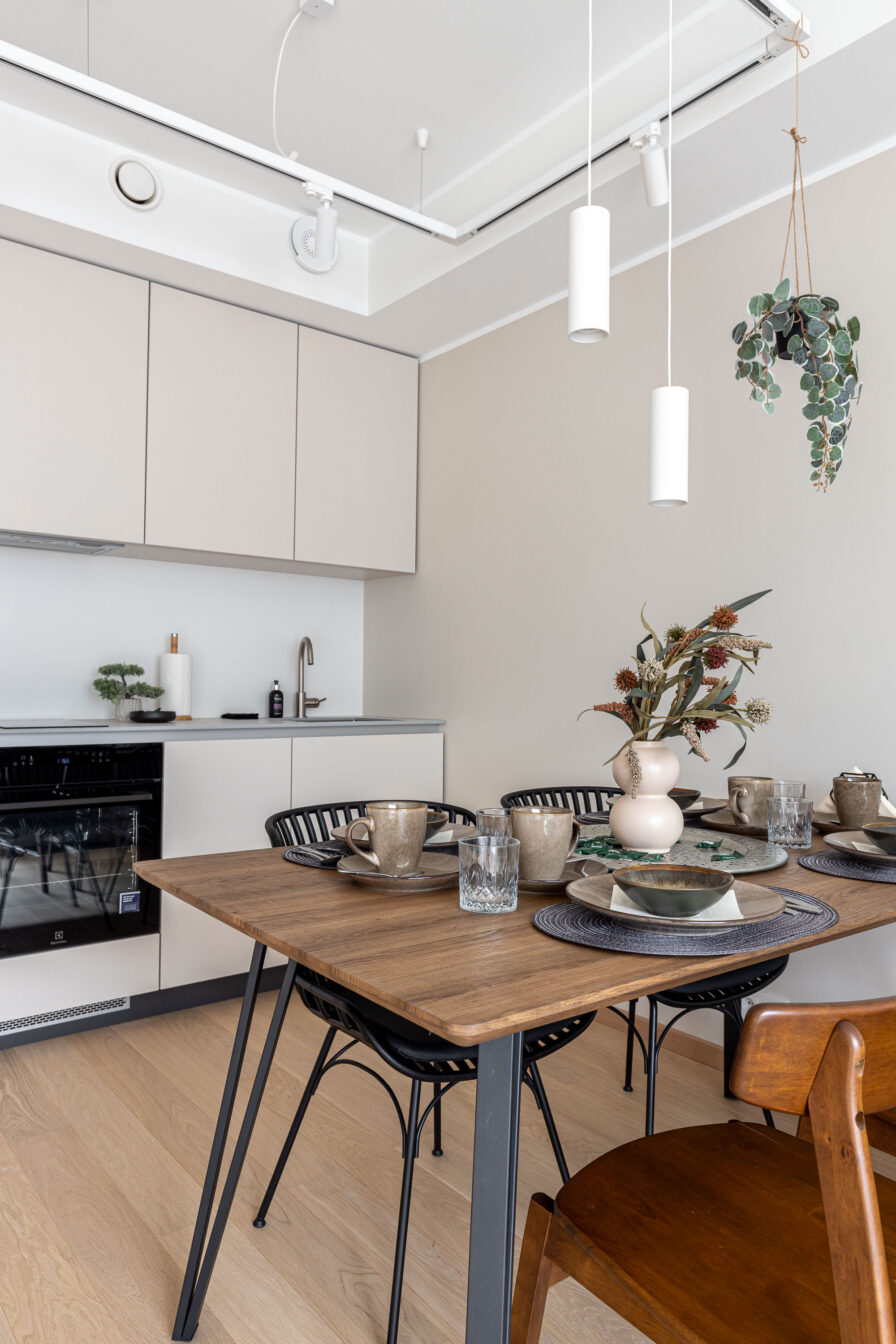
Tiiu 12 studio apartment features both black and white suspended tracks from Moodne Valgustus store. Both spotlights and pendant lights can be moved.
When selecting fixtures for above the table, ensure that most of the light is directed downward, while also allowing the body to glow beautifully. The lower edge of the fixture should be positioned about 1.5–1.6 metres above the floor – ensuring that people can see each other across the table – but the light source should be concealed deeper to prevent any glare.
It’s definitely a plus when the light can be adjusted to be stronger or softer, allowing for the creation of different moods. A very dim cosy fixture may be perfect for romantic dinners, but without additional kitchen ceiling lighting, it can be hard to find the cinnamon jar in the top cabinet or clean the floor properly. Therefore, it’s better to prefer proper ceiling lighting and stock up on nice battery-powered table lamps for hygge purposes.
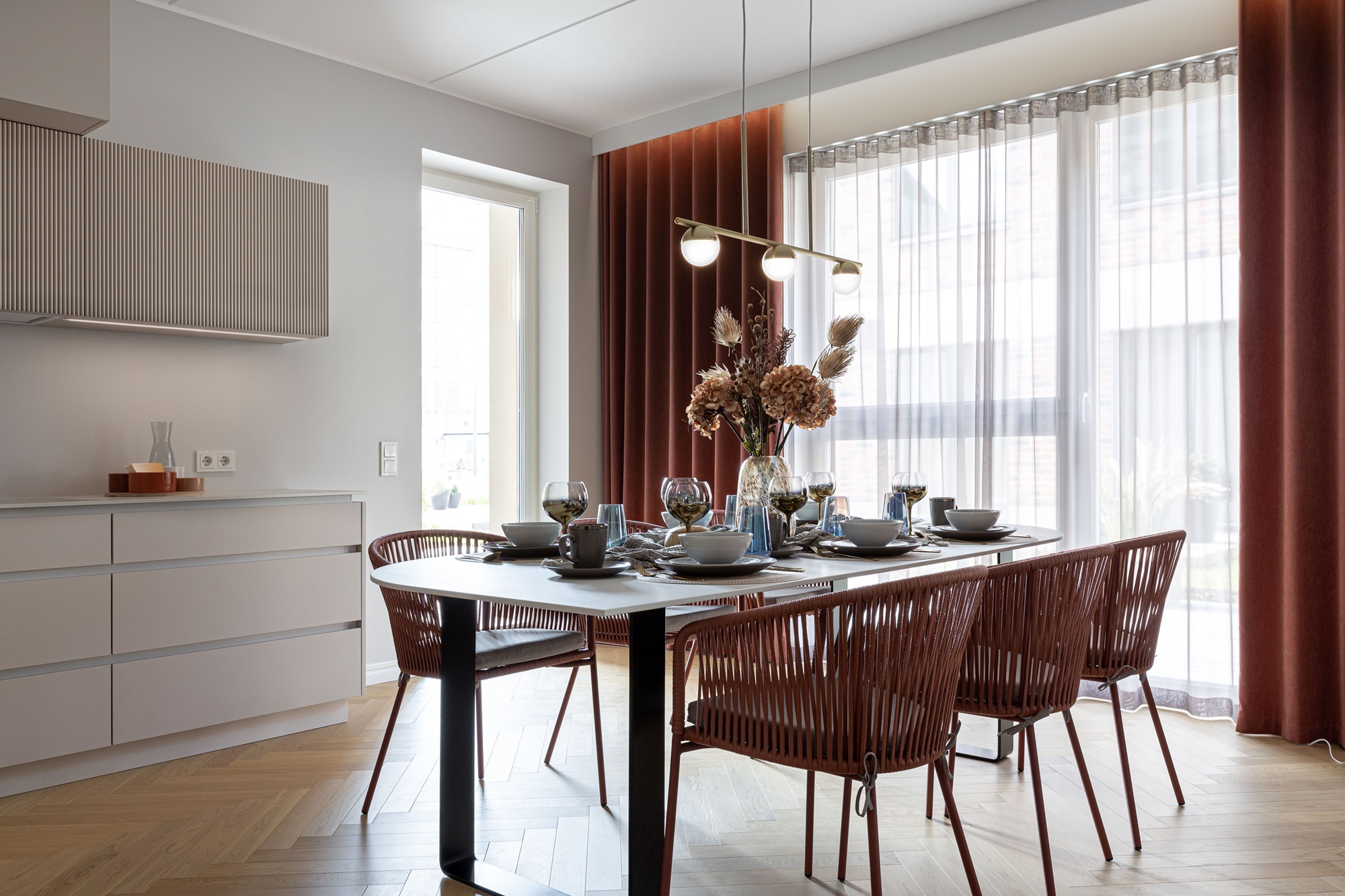
Kitchen countertop lighting is typically addressed together with kitchen furniture. In today’s open-concept homes, where kitchens seamlessly blend into living rooms, opting for warm-neutral countertop lighting at 3000 kelvin creates an inviting atmosphere.
To prevent any discomfort for those seated on the sofa, especially if it’s positioned near the kitchen, consider relocating the countertop light strip further back into the recess. Make sure the light strip on the countertop doesn’t become too narrow.
A home full of sunshine and art – model apartment in Tihase development
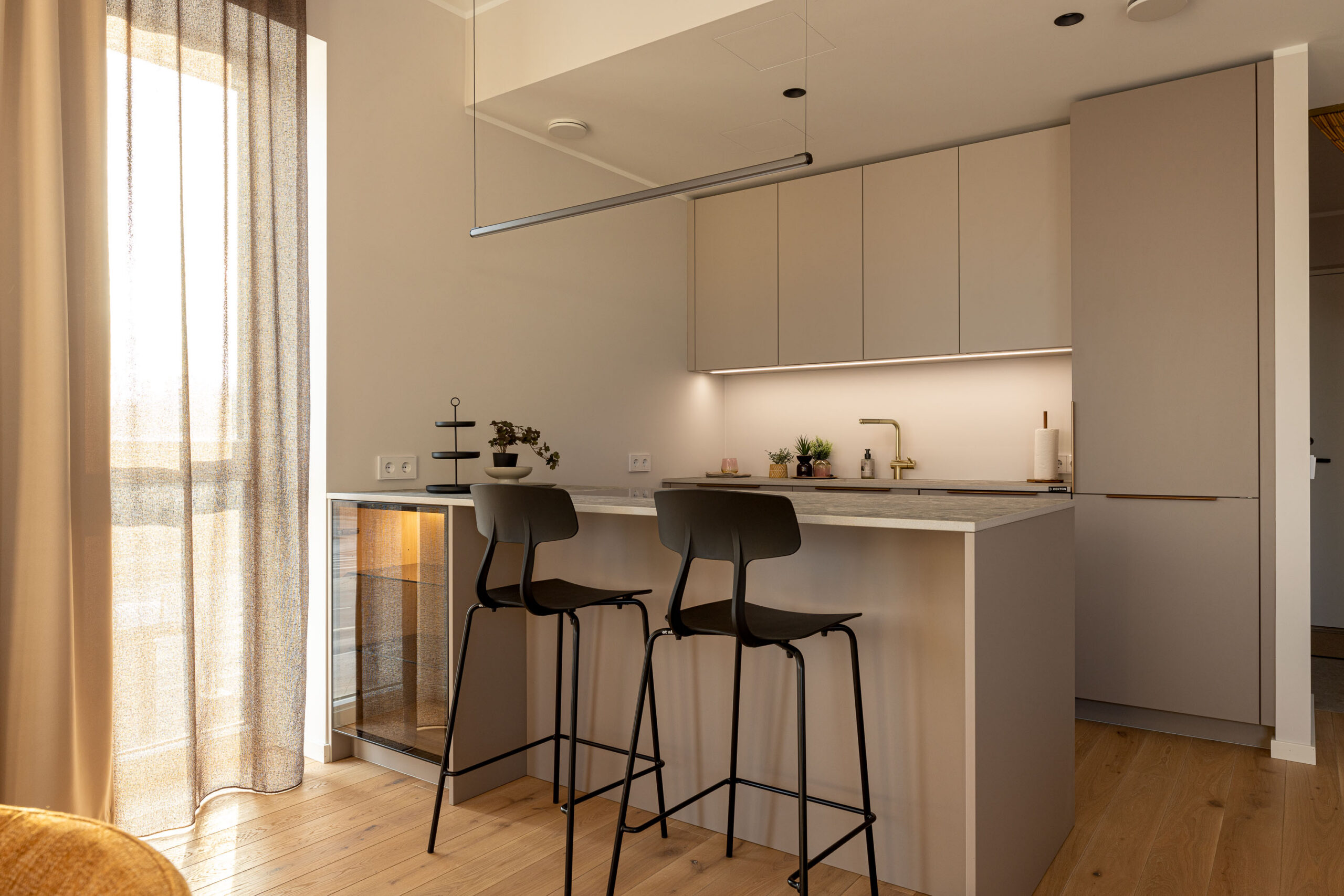
It’s often puzzling when a kitchen has glass-door display cabinets with built-in lighting. These look magnificent and would work as mood lighting, but you might want to turn off the countertop lighting at the same time. If the apartment is already completed and there’s just a single wire behind the upper cabinets, you can have separate sensors or mini-switches installed in the kitchen furniture instead of a wall switch – for controlling the worktop and display lighting.
However, a wall switch often proves to be much more convenient and sensible. In this case, the solution lies in using the Casambi lighting control system, which requires installing a small module transmitter in the switch and adding Bluetooth receivers to the fixtures. Then you can switch and adjust lighting from your mobile device and, as an additional feature, create different lighting modes for food preparation, dinner, and other situations.
A single-button switch can be programmed with up to four lighting scenarios – a quick press on each corner turns lights on/off, while holding your finger down dims them. Installing the module requires an electrician, but you can later adjust the lighting scenes yourself.
Let the light shine!


